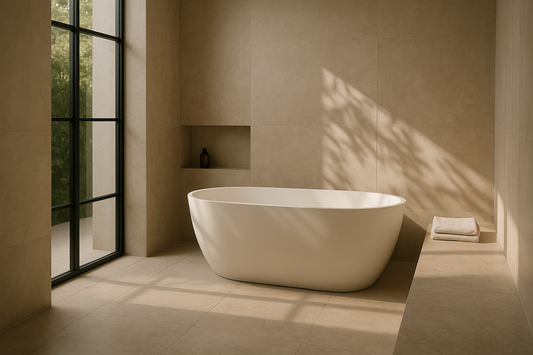
Controlled breathing for ice baths: techniques & effects
Share
How conscious breathing transforms the cold stimulus
Cold is immediate. It overwhelms. It demands.
And that is precisely why the confrontation with ice does not begin in the water – but in the breath.
Breathe before diving
The physiological reaction to cold water is reflexive: The so-called cold shock immediately activates the sympathetic nervous system. Heart rate and blood pressure rise, and breathing accelerates – often to the point of hyperventilation. This is precisely the key: Breathing doesn't react. It regulates.
Targeted breathing techniques help transform panic into presence. Instead of fighting the stimulus, you glide through it—focused, alert, calm.
Three breathing approaches that work with the cold
1. Diaphragmatic breathing (abdominal breathing)
Activated abdominal breathing is the foundation. It slows the heart rate, lowers cortisol levels, and brings the autonomic nervous system into a parasympathetic state.
Before entering the ice pool, it helps to calm the body down without escaping.
2. Box breathing (4–4–4–4 technique)
Known from the mental training of soldiers, Box Breathing is a structured way to calm yourself:
Inhale for 4 seconds – hold for 4 – exhale for 4 – hold for 4.
A stable breathing rhythm that puts the body and mind in a controlled position.
3. Wim Hof technique (controlled hyperventilation + breathing pauses)
This method combines intensive inhalations with longer pauses in breathing – it consciously activates the stress axis so that it can be better regulated later.
Many people use this technique as a ritual before taking an ice bath – what’s important is mindful practice and a safe environment.
Cold without breathing is irritating.
Cold with breathing is consciousness.
The combination of breath control and cold stimulus has an effect that lasts far beyond the moment.
Studies show effects on inflammatory markers, the immune system, and mental resilience.
But beyond all the measured values, the core remains simple:
Those who learn to breathe in the cold learn to be more relaxed in life.
A silent ritual with a noticeable effect
At Arctic Wellness, we don’t see the ice bath as an end in itself – but as a space for reconnection.
Breathing is not a tool, but a part of the ritual.
It reminds us that calm is not the absence of stimulus – but the conscious use of it.
Recommended reading:
-
“Why 4 °C is optimal”
-
“Rituals for Regeneration”



